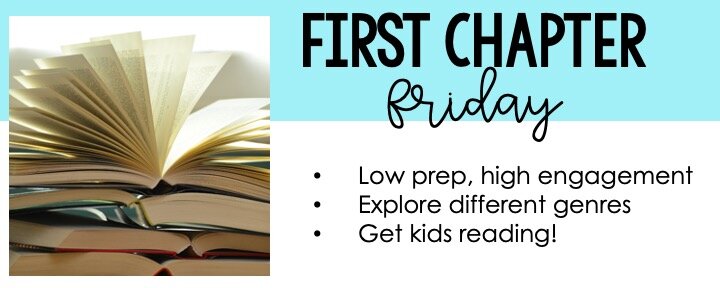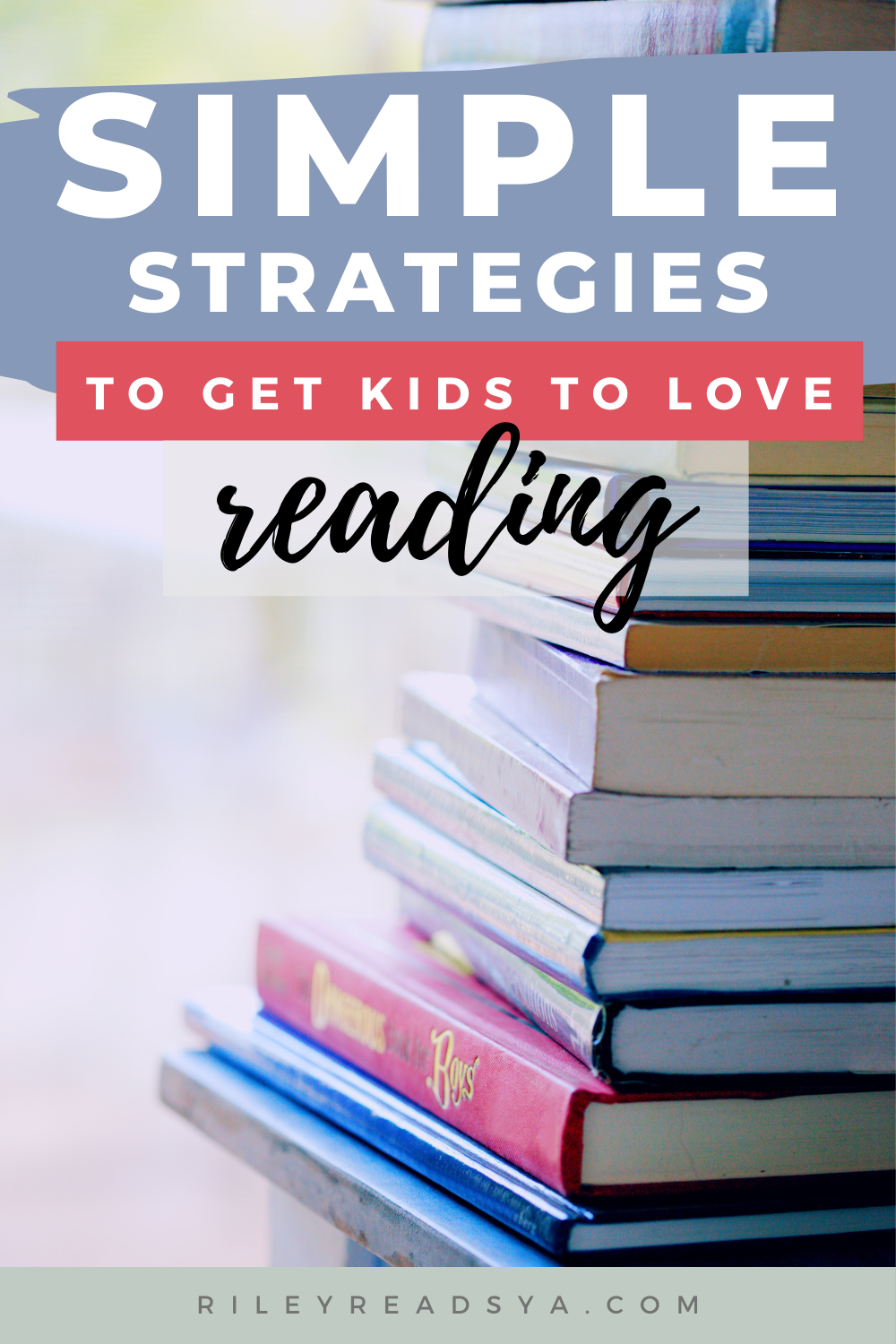5 Ways to Inspire Students’ Love of Reading
Honestly, I’ve forgotten a lot of what I learned in middle school. Anyone else? You know what they say: use it or lose it! And the reality is, we really do lose a lot of what we learn in school because it simply isn’t applicable to our daily lives. For that reason, I’ve always been a teacher who is more concerned with fostering my students’ love of learning and reading than with their ability to memorize or master every piece of content.
When students become readers, they become learners for life. I truly believe that nurturing readers in the classroom is THE most important thing you can do for a student, but I would be lying if I said it was easy. By middle school, many students are far more interested in friends, crushes, and Tik Toks than they are in our bookshelves; but over the years, I have found tremendous success in enticing even the most reluctant readers to pick up and finish a book (and then another and another).
A few simple but meaningful strategies can make all the difference in the reading community you create in your room, and the best part about them is that they all take very little time to plan, implement, and maintain all year long.
A component of independent reading that often inhibits teachers from truly integrating reading time into their classroom is the management of it. We are trained to think of everything in terms of assessments and tangible outcomes, and it can be unsettling to let kids just read! It can also be unsettling to allow students reading time without having a formal way to track or assess their progress.
While many books, blogs, and other educators might suggest that you set up reading logs or assign monthly independent reading projects, I have a much simpler and more sustainable solution: page goals. Helping students become readers (and not just people who occasionally read) means helping them build the habit while integrating it into their identity. I believe this happens when we make it fun, maintain momentum, and celebrate consistent small wins!
Page goals help you do just that. I simply assign students a certain number of pages to read each week, and use a roll call system each Tuesday before book-talking to check in on kids’ progress. The purpose of setting page goals is to avoid bogging students down with cumbersome logs or sticky-note assignments, and instead allowing them to enjoy the fun of reading.
Page goals offer you a way to easily assess students’ progress and provide them with the momentum necessary to fully appreciate and enjoy a novel. They also allow you to be consistently involved in your students’ reading experience because each week they will share the title of the book they’re reading and the page they’re on. After much trial and error, this is the system I love and have used, with success, for years.
For a more in-depth guide detailing how to implement page goals into your classroom, check out this post or use this resource to get started this week!
Sometimes, students simply do not understand the vast amount of literature available to them. With a basic survey, Lauralee from Language Arts Classroom learned that her high schoolers confused fiction and nonfiction, and they also knew little of the various genres and subgenres. She began reading the first chapter of various books to students every Friday. Students loved the read alouds, and many students borrowed the books once they were hooked from the first chapter.
With First Chapter Friday, Lauralee is able to read different genres, authors, and topics, and reading the first chapter of novels provides a start to discussions and prior knowledge to use later in class periods.
Finally, First Chapter Friday requires very little prep with great return. Teachers don’t need to purchase anything for First Chapter Friday! Grab any book, read the first chapter, show the author’s social media feed, and encourage students to read. Not only are you connecting literature to students’ lives, but you also are enhancing future classroom discussions.
If your love language is quick, low-prep strategies, then you need this hack for getting kids hooked on books in 3 minutes flat! After falling in love with First Chapter Friday, Abby from Write on With Miss G created Book Trailer Tuesday. She selfishly wanted to devote another day to celebrating books, but she knew she didn’t have much time in her busy schedule.
Luckily, Book Trailer Tuesday is as simple as pressing play on a different book trailer every Tuesday. If you’ve never seen a book trailer, do a quick search for middle grade, YA, or children’s book trailers on YouTube...you’re welcome! Book Trailer Tuesday is an attractive option if you don’t have the time to commit to First Chapter Friday. And if you’re already doing First Chapter Friday, like Abby, then Book Trailer Tuesday will complement it perfectly.
Like First Chapter Friday, Book Trailer Tuesday is a low-prep, high-impact way to advertise books, generate reading interest, and expose students to a more diverse range of texts. If you show a book trailer every Tuesday, you will expose your students to 36 new titles by the end of the year. Combine that with First Chapter Friday, and that’s an impressive 72 new books. Add weekly book talks to the mix, and you’re looking at over 100 new books!
For more information on Book Trailer Tuesday, including links to a few favorite trailers, head to this blog post or check out these Book Trailer Tuesday resources. For even more tips on how to help kids fall in love with reading, check out this blog post of Abby’s favorite strategies.
As an English Language Arts teacher, one of the greatest joys is being able to connect students with a book they’ll fall in love with. While Brynn Allison from The Literary Maven would love to spend all of her time standing by the shelves of her classroom library pairing up students with great books, she knows that just isn’t possible.
Her desire to share all of the books she has read and loved with her students inspired her to create book recommendation bookmarks. These bookmarks can be used by both teachers and students as a way to share favorite books with others.
After Brynn or her students finish a book, they fill out a bookmark and place it in the book. The bookmarks, printed on brightly colored, stick out of the books and are like little neon signs to other students saying, “Hey! Someone else has read me, loved me, and maybe you will too!” (If you aren’t comfortable actually placing them in books right now, they can also be used to decorate with or make bulletin board displays.)
On the front side of the bookmarks, students identify the genre, give the book a rating out of five stars, and share who might love this book. The bookmarks have three options for the back side: one focused on summarizing, one focused on illustrating and captioning a key scene, and one focused on theme.
Brynn likes to make all three options available to students and allow them to choose, but teachers could also use them when practicing a specific skill. Each option for the back also has three different versions of a “this book made me” checklist with statements like “this book made me want to hide under the covers” and “this book made me feel warm and fuzzy inside.” These bookmarks are the perfect way for students to celebrate the book they just finished and entice other students to read it too.
According to Amanda from Mud and Ink Teaching, there are really two ways to go about helping students fall in love with the reading experience: a front door and a back door. Many of the approaches shared here in this post are front door ideas. These kinds of strategies are high energy, direct exposure to text, and immediate engagement strategies. When these are paired with Amanda’s “back door” approach, the likelihood of transforming students into life-long readers is even more possible.
What Amanda swears by is building units on her curriculum map that are driven by inquiry. So, if her students are embarking on an independent novel or literature circle unit, they’re not doing so in an empty vacuum with no context. Amanda recommends setting up an essential question that rests as a backdrop to the reading, the writing, and the conversations around the books that students are reading. Adults (for the most part) do this naturally. Listen in on any two adults discussing a book and they’re naturally connecting their reading to current events, big life issues, and other things that they’ve read. For students, however, this is not such an easy, natural thing to do.
One independent reading unit that Amanda loves to do is under the question: How do global voices help me see my own place in the world? During this unit, students can read any book they want, as long as the author is not American. This is choice paired with inquiry. As students work through their books, that question is in the back of their minds, getting them ready for a book-loving, life-validating discussion at any point during their reading.
Want to read more about cultivating a community of readers in your classroom? Check out these posts:







